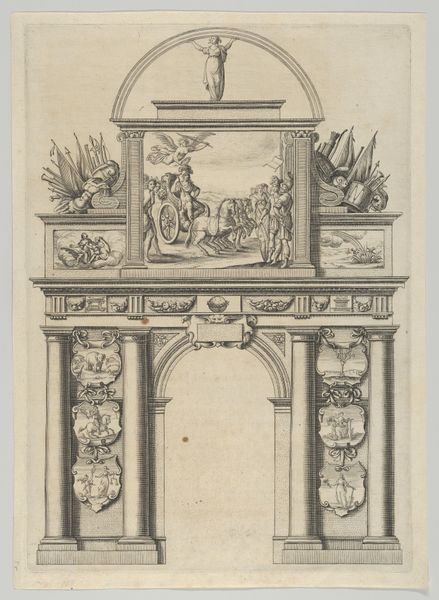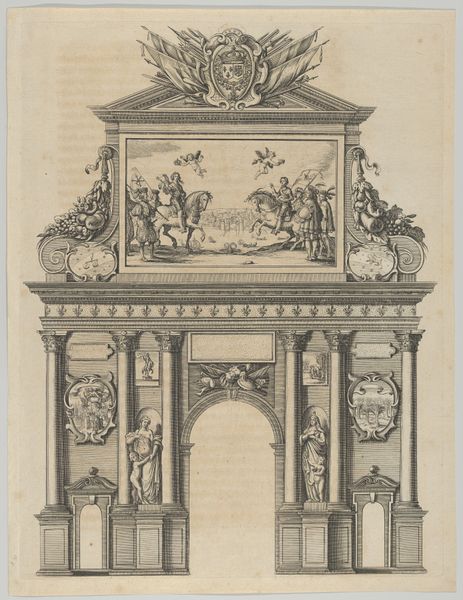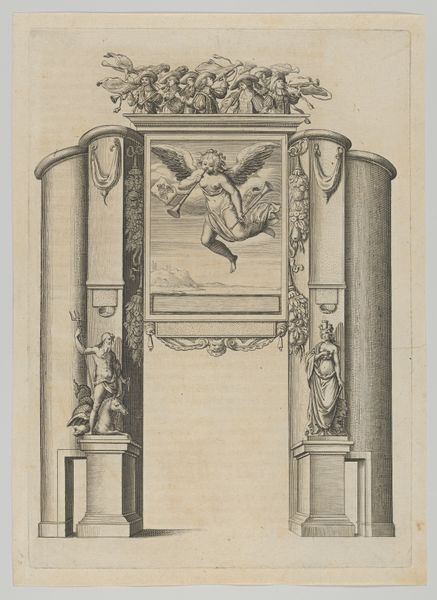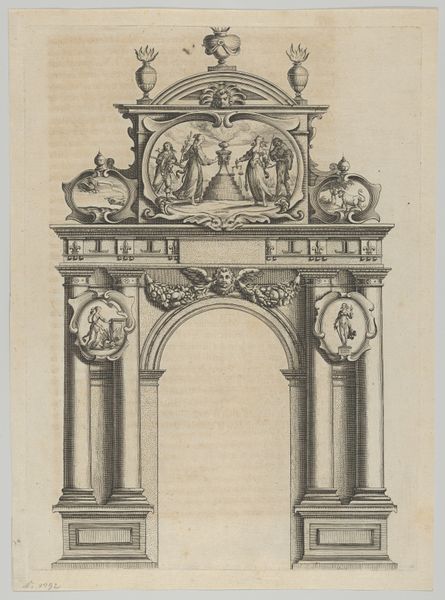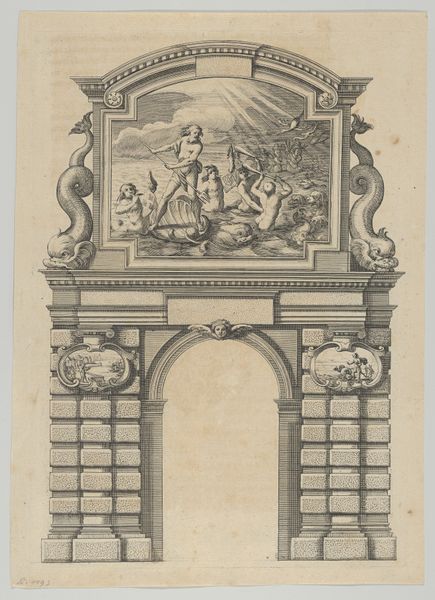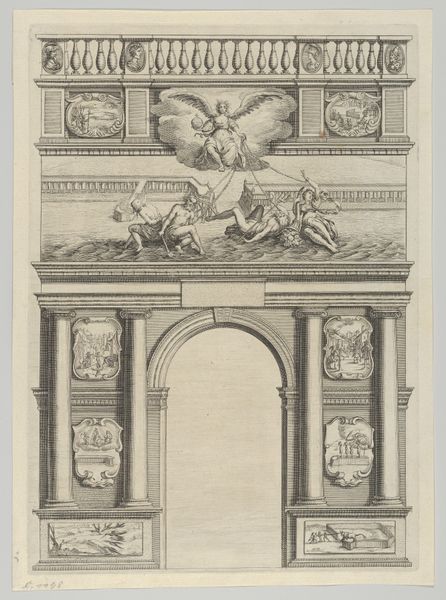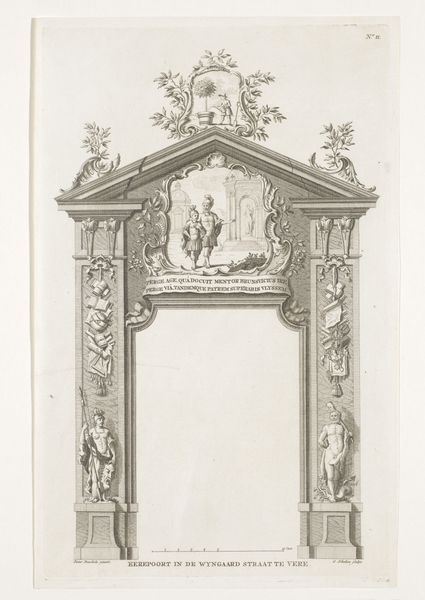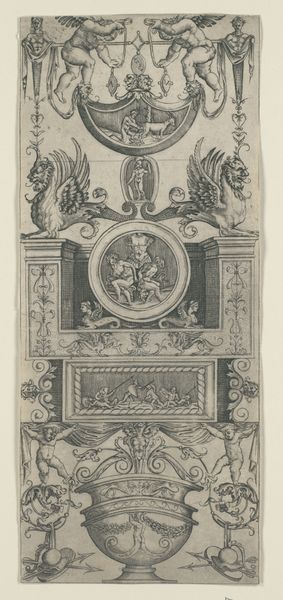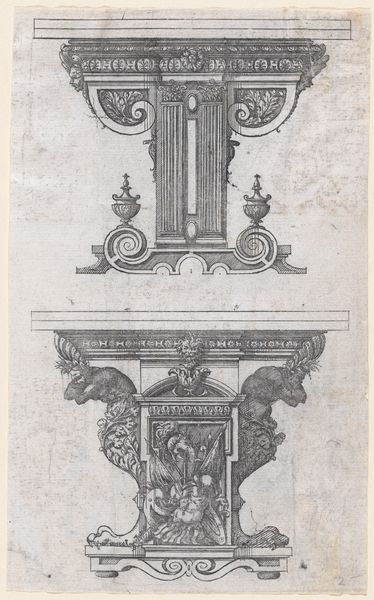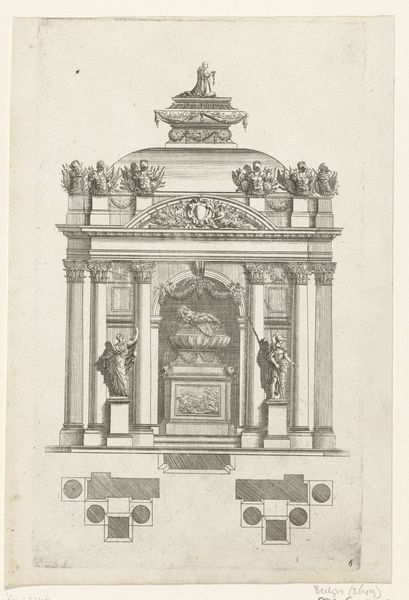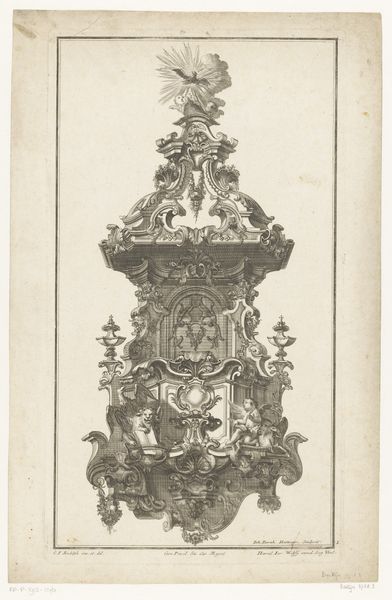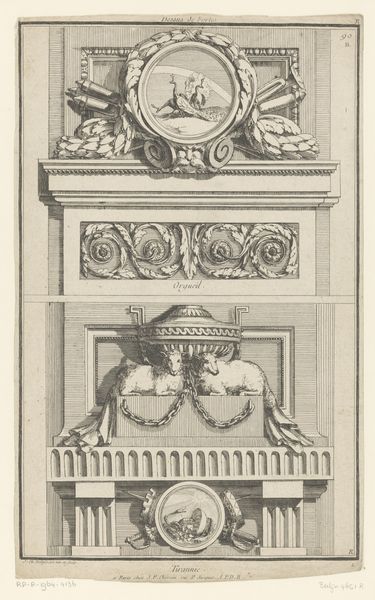
Triumphal arch, from 'Éloges et discours sur la triomphante réception du Roy en sa ville de Paris ...' by Jean-Baptiste de Machault 1629
0:00
0:00
drawing, print, engraving
#
drawing
#
baroque
# print
#
arch
#
cityscape
#
history-painting
#
engraving
Dimensions: Sheet: 11 11/16 × 8 1/8 in. (29.7 × 20.6 cm) Plate: 11 1/8 × 7 1/2 in. (28.2 × 19.1 cm)
Copyright: Public Domain
Editor: This is a print from 1629 by Melchior Tavernier, a Triumphal Arch designed for the Royal entry into Paris. I'm struck by how this combines detailed architecture with... well, nearly naked figures hauling stones at the top. How do you interpret this seemingly contradictory imagery? Curator: It's a fascinating visual program, isn't it? Triumphal arches, historically, aren't just architectural statements. They’re intensely political. This arch, documented in the "Éloges et discours...", functioned as temporary public art during a specific royal event. Consider the context: What is the purpose of staging such a spectacle for the city? Who is the intended audience? Editor: Well, it's for the King, obviously. To honor him. The people of Paris, too, I suppose. But those laborers? I thought arches were usually about military victories, not manual labor! Curator: Exactly! The image isn’t just about celebrating a king. It's about legitimizing power through strategic messaging. Those figures are likely meant to symbolize the collective effort, perhaps forced labor, required to build and maintain the kingdom. This triumphant reception strategically presented images designed to integrate and subordinate various demographics and legitimize Royal control and impress viewers. This visual vocabulary serves the function of political communication. What message is embedded in it? Editor: So, it’s not just flattery. It's propaganda designed to communicate and influence. What do you mean by integrating demographics and legitimizing Royal Control? Curator: Indeed. The cityscape shown in the arch frames power relations, doesn't it? By emphasizing labor in service of the King, they’re not merely showing a completed city, but articulating a vision of an orderly society. Think about where this print would circulate; how would the message influence opinions, and potentially control dissent? It prompts us to think critically about the intersection of art, power, and spectatorship. Editor: That makes so much sense! It’s like they're showing off not just the King, but the King's control over the whole of society. Curator: Precisely. So, this triumphal arch isn’t simply a celebratory symbol; it’s an effective tool of governance projected onto the social stage, illustrating the powerful use of visual culture to propagate narratives of legitimacy and order. The medium, print, allowed for broad dissemination and further reinforced social norms. Editor: Wow, I’ll never look at triumphal arches the same way again.
Comments
No comments
Be the first to comment and join the conversation on the ultimate creative platform.
